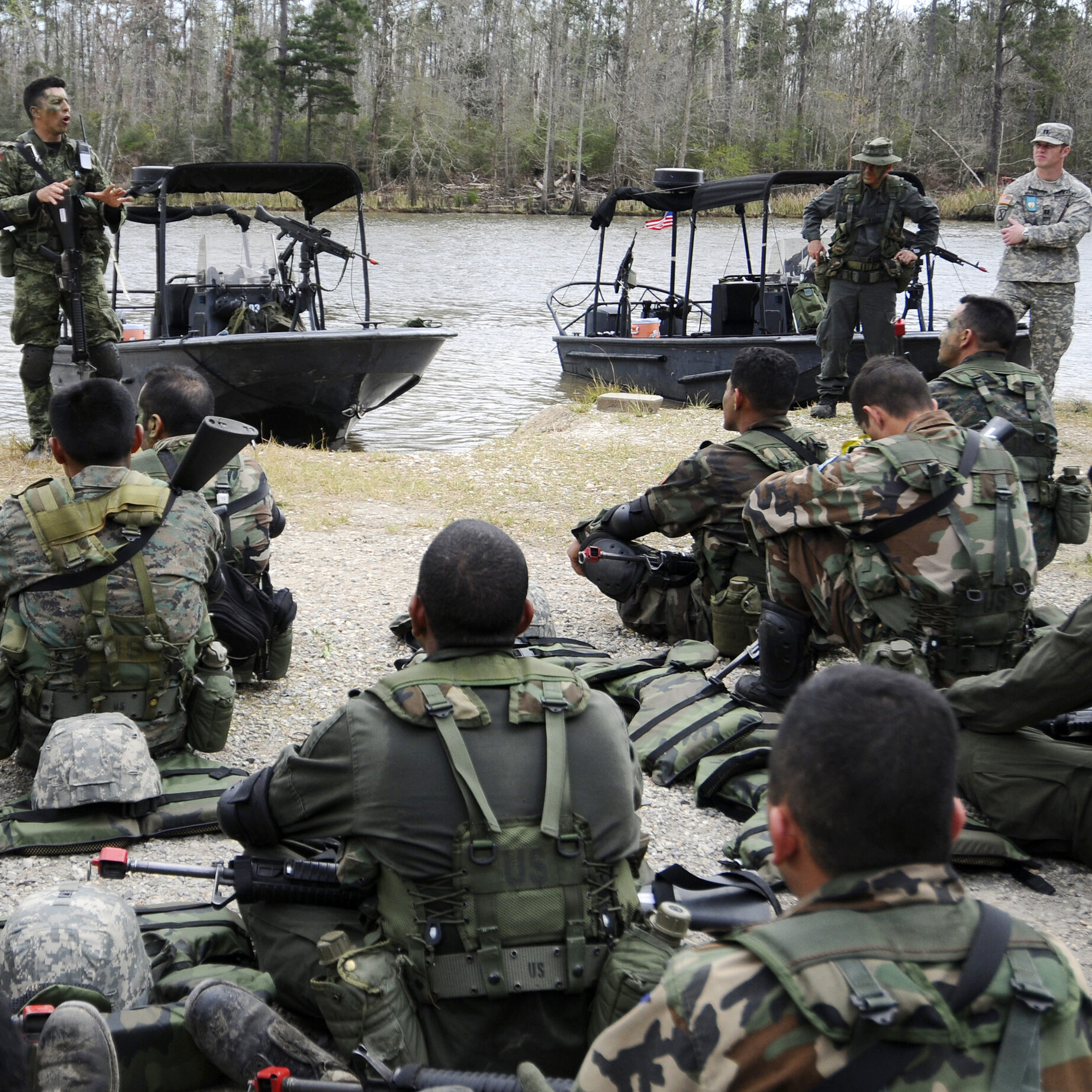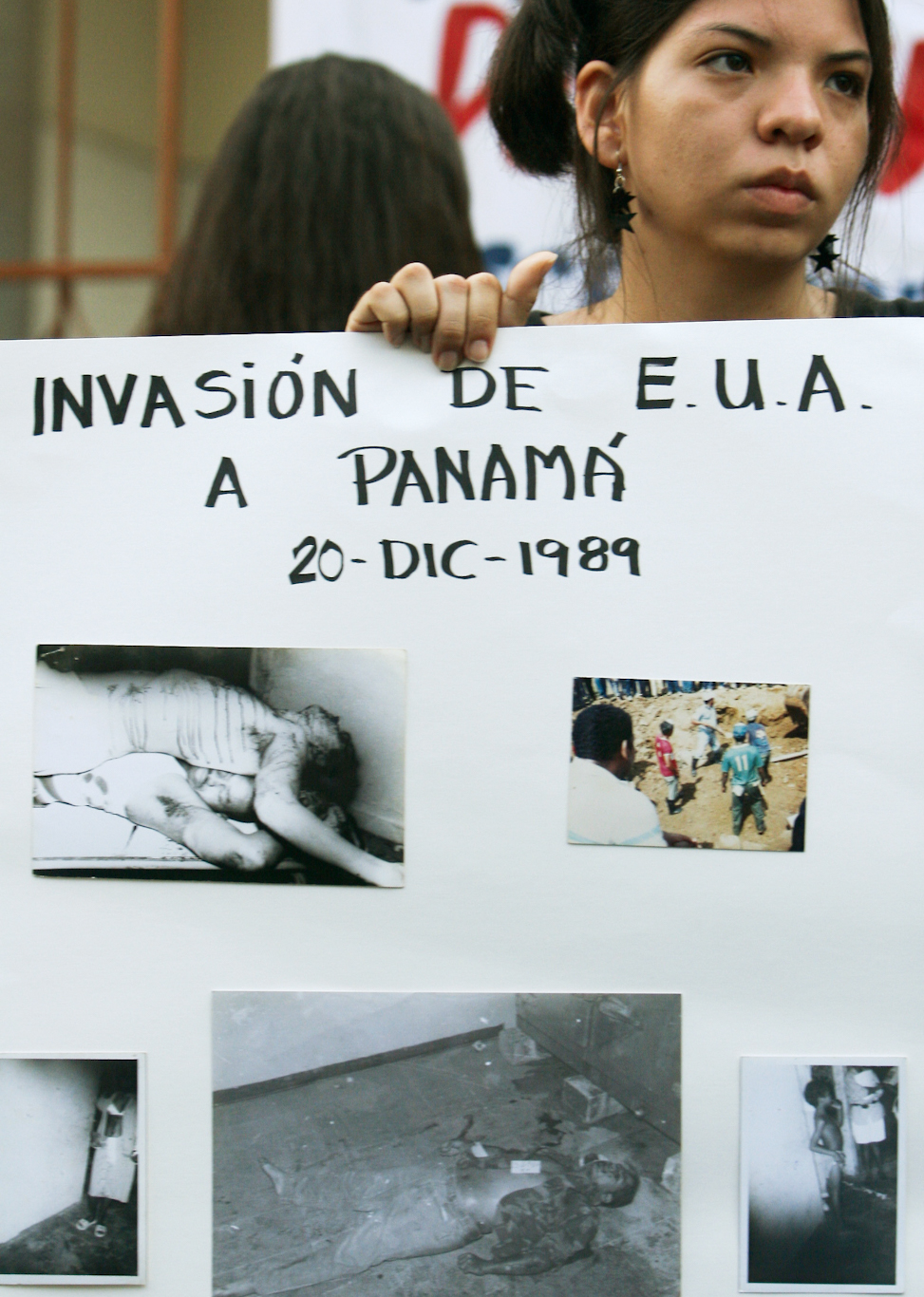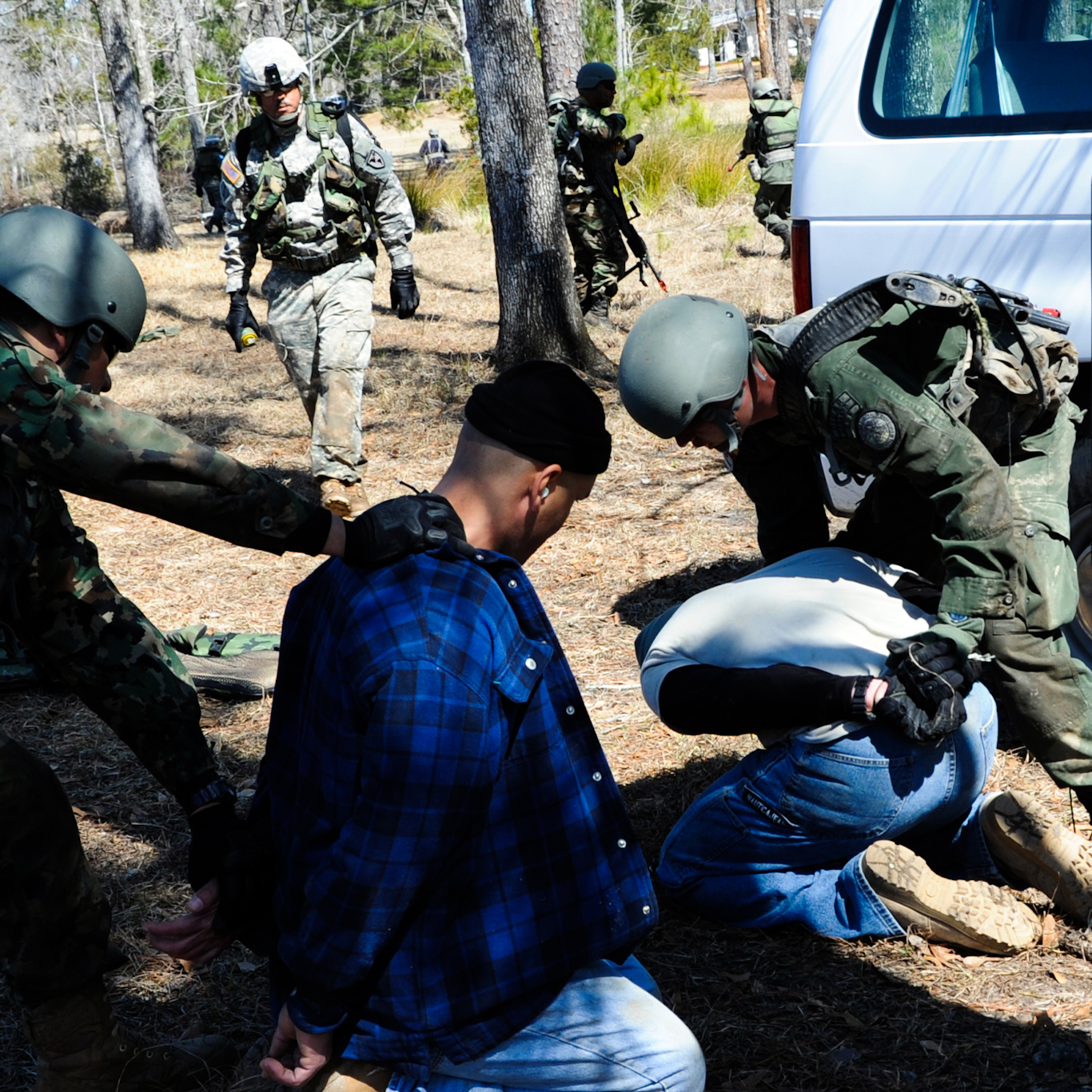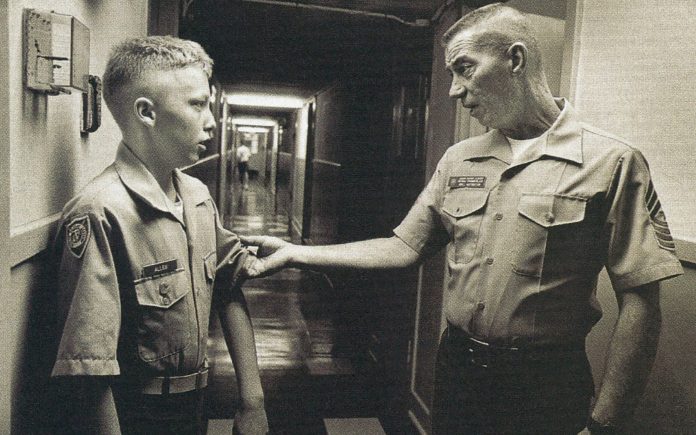Fort Benning, the infamous Georgia U.S. military base, is once again in the news, changing its name to Fort Moore, thereby ditching its Confederate name. Yet none of the media covering the rebranding – not The New York Times, the Associated Press, CNN, ABC, CBS News, USA Today nor The Hill – mentioned the most controversial aspect of the institution.
Across Latin America, the very name of Fort Benning is enough to strike terror into the hearts of millions, bringing back visions of massacres and genocides. This is because the fort is home to the School of the Americas (now known as Western Hemisphere Institute for Security Cooperation or WHINSEC), a shadowy academy where around 84,000 Latin American soldiers and police officers have been taught on the U.S. dime on how to kill, torture and how to stamp out political activists.
Thus, these units effectively serve as shock troops for the U.S. Empire, making their country safe for American multinationals to pillage. MintPress has found that no fewer than 16 School of the Americas graduates would go on to become heads of state in their country.
“The school is controversial partly because of its role in promoting US hegemony in Latin America, which undermines the sovereignty and independence of other countries,” James Jordan, national co-coordinator at Alliance for Global Justice, told MintPress, adding,
But even worse, it is how the school has promoted this: teaching methods of torture – even publishing torture manuals, counterintelligence, psyops, repression of political voices that don’t meet the approval of Washington DC. If one looks at cases of human rights abuses by the military throughout Latin America, the number of those responsible who were trained at the School of the Americas is simply staggering.”
Terror Factory
Founded in 1948, the school operated in Panama until it was expelled in 1984. Its move to Georgia that year began a period of increased scrutiny of the institute’s actions. U.S. groups such as School of the Americas Watch led calls to shut it down permanently. In 1996, the Pentagon was pressured into releasing the school’s official training manuals. Even a casual glance through the nearly 1200 pages of instructions makes for sobering reading and dispels the myth forever that the U.S. is a benevolent global force.
There is virtually no discussion about freedom, democracy and human rights in the documents.
Instead, there is an overwhelming obsession with communists and other “subversive” elements that must be destroyed at all costs, as well as detailed directions on how and when to torture, who to kill and how to stamp out political and social movements.

students were taught that Communism is a radically evil specter attempting to dismantle society completely and that it must be stamped out at all costs. Sure signs of communist subversion, the manuals note, include individuals refusing to pay rent, taxes or loans, people criticizing the police or judicial system, strikes or protests, student political activity, unrest among laborers, writing letters to newspapers or politicians complaining about poor living conditions or signing petitions. In other words, any democratic activity or political organization whatsoever could be deemed communist, and those participating in it were marked for potential “liquidation” – the school’s preferred euphemism for murder.
Despite claiming that communism is inherently anti-democratic, the manuals also note that radicals can also:
…resort to subverting the government by means of elections in which the insurgents cause the replacement of an unfriendly government official to one favorable to their cause … insurgent leaders can participate in political races as candidates for government posts.”
Thus, any political candidate the military or police decide is undesirable is a fair target for execution.
The how-to guides advocate the use of torture, blackmail, physical abuse and paying bounties for enemy dead. They also suggest a myriad of tactics to deal with insurgents, including arresting their family members and using torture. After all, they note, it is a useful fear tactic that insurgents are “afraid to be brutalized after capture.”
According to testimony from a former student, the school would often kidnap civilians in Panama and use them as live test subjects for students to practice torture.
Reading the manuals makes clear that the U.S. target was much less some Soviet-controlled uprising but the basic tenets of democracy. And so the U.S. went about training tens of thousands of armed men to “kill hope,” in the words of former State Department employee William Blum.
Under U.S. tutelage, across Latin America, “militaries became more like hyper-reactionary, hyper-armed internal police forces than organizations that were supposed to protect national borders from invasion,” Lesley Gill, a professor at Vanderbilt University and the author of “The School of the Americas: Military Training and Political Violence in the Americas,” told MintPress.
Therefore, the most infamous torturers were not “bad apples,” as some American officials have claimed. They were doing exactly what they had been instructed to do: mete out some of the most extreme and unspeakable violence in human history in order to pave the way for economic structural adjustment (i.e. the looting of a region by U.S. multinationals).
So brazen was the School of the Americas that it also singled out U.S. political figures. The manuals describe Tom Hayden, a human rights activist and husband of Jane Fonda who would later become a California senator, as “one of the masters of terrorist planning” in America – a designation that would be more than enough to have him assassinated, were he from Argentina, Brazil, Guatemala, or any other country where the school operated.
Dishonor Roll
It is hard to overstate the influence the school, and the United States more generally, has had on the political direction of Latin America. A measure of this is how many heads of state have passed through the institution’s doors. Surprisingly, there is no definitive list. However, by checking presidents’ names against an incomplete list of School of the Americas graduates, MintPress was able to identify at least 16 foreign heads of state who were trained there, almost all of those from Latin America and the Caribbean. These include:
- Hugo Banzer, dictator of Bolivia, 1971-1978, president of Bolivia, 1997-2001;
- Raoul Cédras, de facto military dictator of Haiti, 1991-1994;
- Leopoldo Galtieri, dictator of Argentina, 1981-1982;
- Ollanta Humala – president of Peru, 2011-2016;
- Yahya Jammeh, president of the Gambia, 1996-2017;
- Juan Alberto Melgar Castro, military head of Honduran junta dictatorship, 1975-1978;
- Otto Pérez Molina, president of Guatemala, 2012-2015;
- Efrain Ríos Montt, dictator of Guatemala, 1982-1983;
- Manuel Noriega, dictator of Panama, 1983-1989;
- Policarpo Paz García, military leader of Honduras, 1978-1982;
- Guillermo Rodriguez, dictator of Ecuador, 1972-1976;
- Omar Torrijos, de facto military leader of Panama, 1968-1981;
- Juan Velasco Alvarado, dictator of Peru, 1968-1975;
- Jorge Rafael Videla, dictator of Argentina, 1976-1981;
- Guido Vildoso, de facto military head of state of Bolivia, 1982;
- Roberto Eduardo Viola, dictator of Argentina, 1981.
While many on this list are notorious human rights abusers, some of the most feared criminals in the school’s history never became president. While Franck Romain, former leader of the Tonton Macoute, the Haitian death squad responsible for all manner of crimes, including the St. Jean Bosco massacre, was trained at the school, he did not take Haiti’s top job. And Salvadorean fascist leader Roberto D’Aubuisson – known as “Blowtorch Bob” for his frequent use of a blowtorch on his opponents’ genitals – killed some 30,000 people, but similarly never wore the presidential sash.
Putting Theory Into Practice
Post-World-War-Two Latin America was a time of change. Revolutions in Bolivia and Cuba had swept aside old governments, progressive nationalists with big ideas had been elected in Guatemala and Brazil, while even the traditionally conservative Catholic Church had embraced what it called the “preferential option for the poor.” Others went even further: liberation theologists preached that it was the role of the church to support the struggles of working-class movements worldwide in overthrowing their oppressors.
In the wake of the Cuban Revolution, the Kennedy administration redirected the mission of the Latin American military from “hemispheric defense” to “internal security,” which meant turning the guns inwards at the domestic population. The effect, as Director of Internal Defense for the State Department Charles Maechling wrote, was a shift from the toleration of the “rapacity and cruelty of the Latin American military” to “direct complicity” in their crimes, to support for “the methods of [Nazi Holocaust chief] Heinrich Himmler’s extermination squads.”
School of the Americas graduates were involved in many of the worst crimes in modern Latin American history. It was in Central America in the 1980s where many of the most systematic exterminations of people occurred. Two of the most notorious were the 1981 massacres at El Junquillo and El Mozote in El Salvador.
At El Junquillo, U.S.-backed death squads rounded up and killed everyone in the village, with over 70 civilians total. Most of the victims were children. All female villagers, a United Nations Truth Commission Report found, were systematically raped before their murder, even the children. Most of the officers the U.N. cited were School of the Americas graduates.
But El Junquillo was comparatively minor to what happened a few months later at El Mozote. School of the Americas-trained death squads surrounded the village and separated the males from the females. The women and girls were raped, while the men and boys were beaten and killed. In all, 800 civilians were executed, including babies who had their throats slit. 10 of the 12 officers mentioned by the U.N. were ex-School of the Americas.

Gill noted that this practice of sowing terror by massacring “soft targets” was part of a directed drive to intimidate the population into accepting anything their U.S.-backed dictatorships wanted.
By destroying and disarticulating all kinds of popular organizations, from peasant groups to trade unions and student organizations, it really dismantled any kind of opposition to regressive state policies. So the violence really paved the way for neoliberalism in the 1980s,” she said.
In Nicaragua, however, the Sandinista rebels managed to overthrow the U.S.-backed Somoza dictatorship. Within months, the Sandinistas, many of them inspired by Liberation Theology, had launched a literacy crusade to teach the poor to read, redistributed land to the peasants, began public health campaigns and attempted to ensure all citizens had enough food to eat. The World Health Organization awarded Nicaragua its prize for the most significant achievement in public health, while UNESCO similarly honored the Sandinista government for its successful literacy campaigns.
Seeing these developments, the Reagan administration went into overdrive to bring the terrors of the Earth to the country, funding, training and arming huge armies of far-right death squads in an attempt to crush what President Reagan called the “mounting danger in Central America that threatens the security of the United States.” Oxfam retorted that the real “threat” Nicaragua posed was that it was a “good example” for other nations to follow.
Daniel Kovalik, a human rights law professor at the University of Pittsburgh and the author of the new book, “Nicaragua: A History of US Intervention & Resistance,” noted that the School of Americas was crucial in kneecapping the Sandinista revolution:
The School of the Americas has trained military and state security forces in torture and repressive tactics against social movements. They were very important in Nicaragua in helping to train the National Guard, which kept Nicaragua down for decades. And, of course, they went on to train the Contra death squads. So they played a terrible role in Nicaragua’s history.”
The National Guard, Kovalik told MintPress, was responsible for around 50,000 murders in a country of only 2.5 million people, around 2% of the entire country. In terms of population, this would be equivalent to a force killing 6.6 million American citizens today.
Reagan’s dirty war across Central America, political scientist Noam Chomsky notes, “was basically [a] war with the Catholic Church.” The Church in Latin America had embraced many of the key aspects of Liberation Theology and, therefore, was targeted for extermination. School of the Americas graduates deliberately attacked churches and killed clergy en masse, including perhaps the most infamous political killing of the era: the assassination of Archbishop Oscar Romero. Three-quarters of the military units implicated in Romero’s killing were trained under the watchful eye of the School of the Americas.
Far from being ashamed of this history, however, the school is proud of its achievements in stamping out churchmen. Indeed, one of the talking points that the school puts forward as an achievement is that it helped “defeat Liberation Theology.”
New Name, Same Tactics
The publicization of these extraordinarily brutal crimes led to growing pressure to close the School of the Americas for good. In 1999, Congress even passed a bill halting funding for the school. In a classic sleight-of-hand response, the military closed the School of the Americas in December 2000. But just a few weeks later, it opened up a “new” college, the Western Hemisphere Institute for Security Cooperation (WHINSEC), on the same military base, replete with the same instructors as previously. Thus, democratic oversight was nullified.
WHINSEC has trained more than 24,000 students from 36 countries since its rebranding and continues to instruct between 1200 and 1900 military and police personnel annually. Ludicrously, WHINSEC maintains that it has nothing to do with the School of the Americas, that particular name or phrase not appearing anywhere on its website, according to a database check performed by MintPress News.
In its own accounting, the school notes that,
Since 2001, WHINSEC has championed human rights and democracy by developing a new generation of ethical leaders to confront the uncertain and complex security challenges of the Western Hemisphere.”

And while the school now officially offers courses with words like “human rights,” “ethics,” “democracy,” and “peace-keeping” in their titles, statistics show that these are among the least attended classes. Instead, commando tactics, military intelligence, psychological operations and combat training remain the most popular.
The communism of the 20th century is largely gone. But the “threat” of grassroots democracy is as real as ever, hence the continued need for the school. Therefore, the U.S. changed not only the School of the Americas’ name but also its outward justification to counter-terrorism and counter-narcotics. But the real mission – to dominate Latin America – remains.
“I still think that they [WHINSEC] are up to what they have been doing for years and, unfortunately, they are able to do it more quietly because there isn’t that [popular] interest” anymore, Kovalik warned.
Mass Killings in Colombia
Nowhere is this seamless transition more apparent than in Colombia. As Gill noted,
In Colombia, the Cold War blurred into the drug war, which became an excuse to keep military aid and training flowing… Colombia may have had the most recruits trained at the School of the Americas, and the death and destruction there has just been unbelievable.”
Kovalik agreed. “The reign of terror has been incredible,” he said, “the death toll there is hard to count, but certainly in the hundreds of thousands.”
This violence, though perfectly well known to the people it affects, is almost completely hidden from Western eyes. Under the guise of a counter-narcotics campaign, the U.S. has spent billions helping its Colombian ally fight a genocidal war against its own peasant population so that American multinationals can exploit the Colombian countryside’s vast mineral wealth. According to the U.N. Human Rights Council, 6.8 million Colombians are currently internally displaced, with hundreds of thousands more fleeing the country altogether.
Throughout the 2000s, Colombian forces would proactively murder any civilian resistance they encountered, from journalists to unionists or peasant leaders, later claiming their victims were members of revolutionary guerilla groups. This practice dubbed the “False Positives Scandal,” is thought to have resulted in over 10,000 deaths. To this day, however, there exists a “staggering…vicious and endemic cycle of violence and impunity,” according to the U.N. High Commissioner on Human Rights.
As a result of this unleashed terror on the part of the military and its adjacent paramilitaries, Colombia is the most dangerous place in the world to be an activist. In 2022, 46% of all human rights defender killings happened in Colombia.
Coups, Courtesy of the School of the Americas
Despite what its website says, the School of the Americas/WHINSEC is still playing a key role in regime change. In 2009, the progressive, democratically-elected president of Honduras, Manuel Zelaya, was overthrown in a military coup led by General Romeo Vasquez. Vasquez was supported all the way by the U.S. government; Secretary of State Hillary Clinton later wrote that she did all she could to “render the question of Zelaya moot,” i.e. to ensure that he would never return to power. Colonel Herberth Bayardo Inestroza, a Honduran army lawyer, told a U.S. newspaper, “It would be difficult for us, with our training, to have a relationship with a leftist government. That’s impossible.” The training he was likely referring to was that which he and General Vasquez received at the School of the Americas, which they both attended.
What followed was over a decade of brutal, corrupt, military-influenced government, leading to a massive refugee crisis spilling over into neighboring countries, including the United States. Things, however, began to stabilize after the country elected president Zelaya’s wife, Xiomara Castro.
Bolivia, meanwhile, had been a prime target for regime change since 2006, when it chose Evo Morales of the Movement Toward Socialism as president. Between 2006 and 2019, Morales reduced Bolivian poverty by 42% and extreme poverty by 60% and nearly halved the unemployment figures.
He was able to do this partially because his administration nationalized the country’s hydrocarbons industry, using the profits to fund large-scale social programs. Morales stopped sending military and police to Fort Benning, instead opening a new anti-imperialist rival school to WHINSEC. “We want to build anti-colonial and anti-capitalist thinking with this school that binds the armed forces to social movements and counteracts the influence of the School of the Americas that always saw the indigenous as internal enemies,” he explained.
Yet Morales’ days in power were cut short. In 2019, a group of School of the Americas/WHINSEC-trained army officers, led by General Williams Kaliman, forced Morales out of power, despite the fact that, just weeks earlier, he had won a landslide re-election. The military would later carry out multiple massacres to crush resistance to their hand-picked candidate taking over as dictator.
The new government closed down Morales’ anti-imperialist school and replaced it with one named after the killers of Che Guevara. Fortunately for the people of Bolivia, the U.S.-backed dictatorship lasted less than one year, as waves of nationwide protests led by workers and farmers paralyzed the country, forcing new elections that Morales’ party won even more convincingly than before. Facing jail time for his crimes, Kaliman fled to the United States, where the U.S. government is protecting him.
Ground Zero of Empire
It is indeed correct that monuments and institutions to Confederate-era slavers should change their names. However, in typical American fashion, the army chose to rename the institution Fort Moore after a U.S. general from the Vietnam War – a genocidal attack on South-East Asia that left up to 3.5 million dead and entire societies in ruins.
The main problem with Fort Moore, of course, was never the name but the fact that it was ground zero for the American empire. Often, it seems like there is barely a Latin American dictator, torturer and genocidaire that did not attend the school and learn the dark arts necessary to terrify their countrymen into acquiescence.
These hired imperial shock troops carried out the extraordinary violence necessary to make their respective countries safe for American corporations to pillage them, for mining conglomerates to destroy the land, for agribusiness to poison the soil, and for oil companies to wreak havoc with the environment. It is also their role to suppress any popular movements that might challenge this highly unequal state of affairs, making sure that political parties, trade unions, Catholic priests, or any other group are met with batons and bullets. And in this upside-down world, this enforced banana republicanization is what the U.S. government refers to as “democracy promotion.”
It is little wonder, then, that corporate media – the mouthpiece of the Western business elite – failed to mention the most objectionable aspect of the fort when reporting on its name change.
Feature photo | Illustration by MintPress News
Alan MacLeod is Senior Staff Writer for MintPress News. After completing his PhD in 2017 he published two books: Bad News From Venezuela: Twenty Years of Fake News and Misreporting and Propaganda in the Information Age: Still Manufacturing Consent, as well as a number of academic articles. He has also contributed to FAIR.org, The Guardian, Salon, The Grayzone, Jacobin Magazine, and Common Dreams.
The post How a Notorious Georgia Army School Became America’s Training Ground for Global Torture appeared first on MintPress News.

